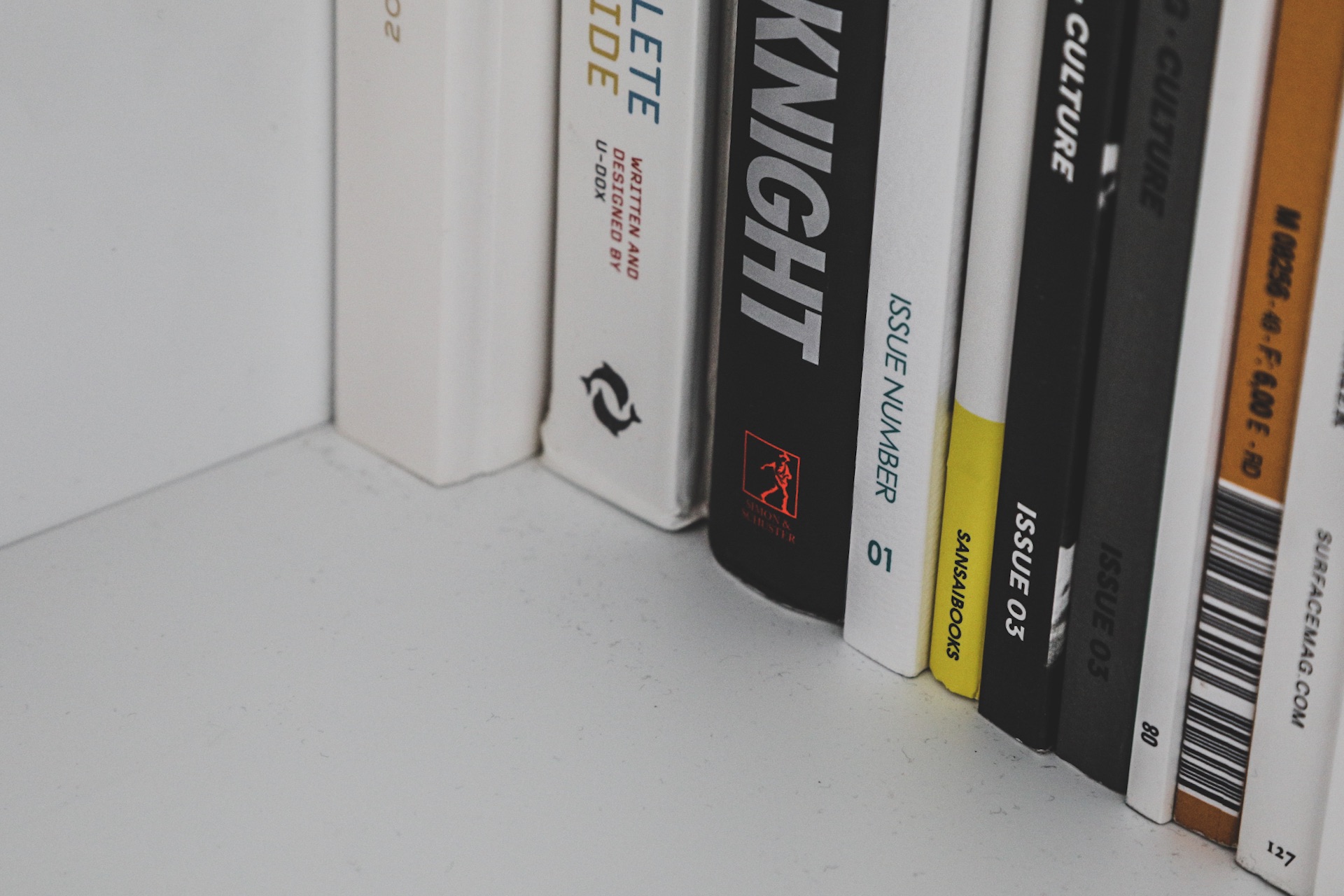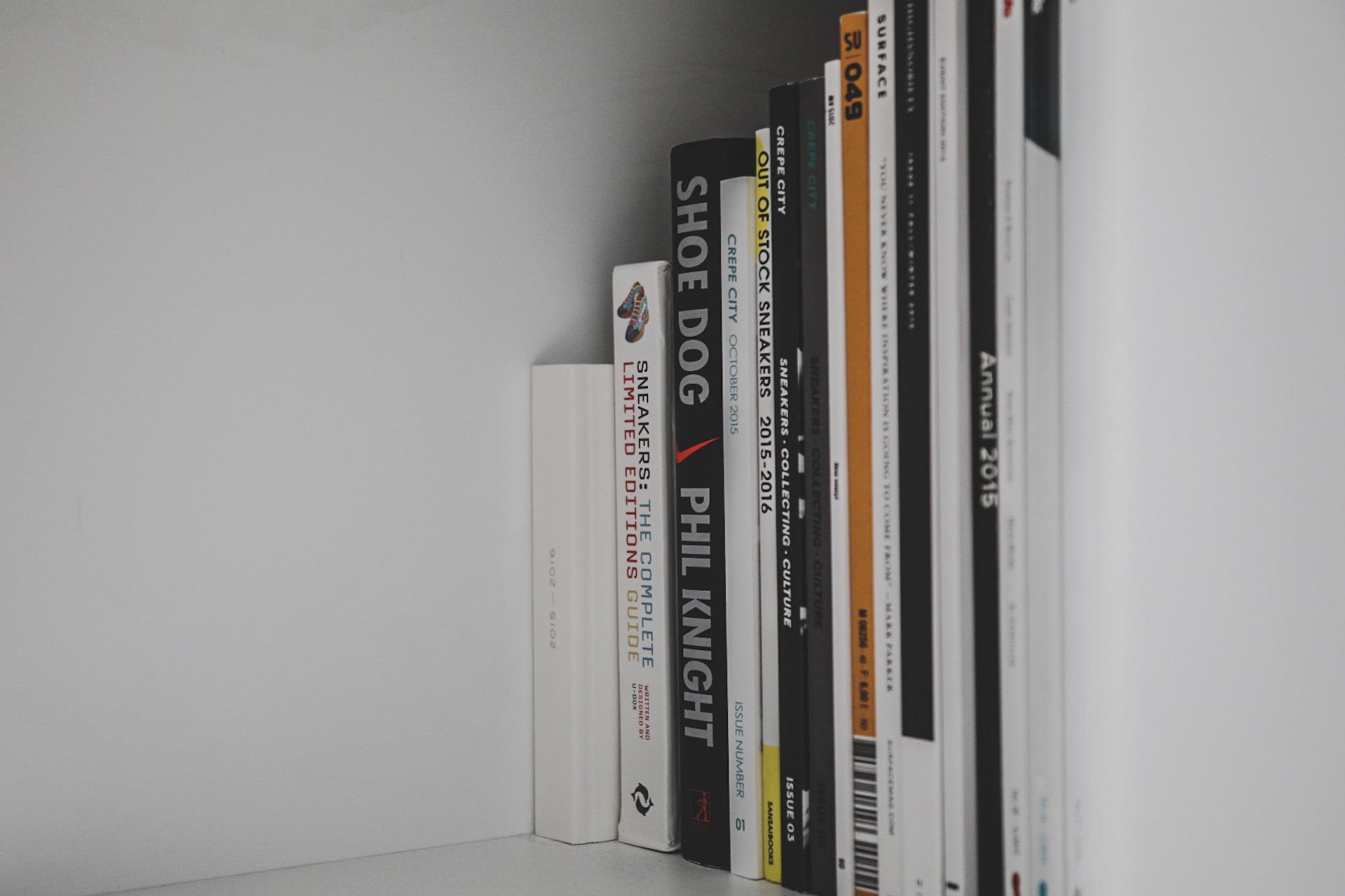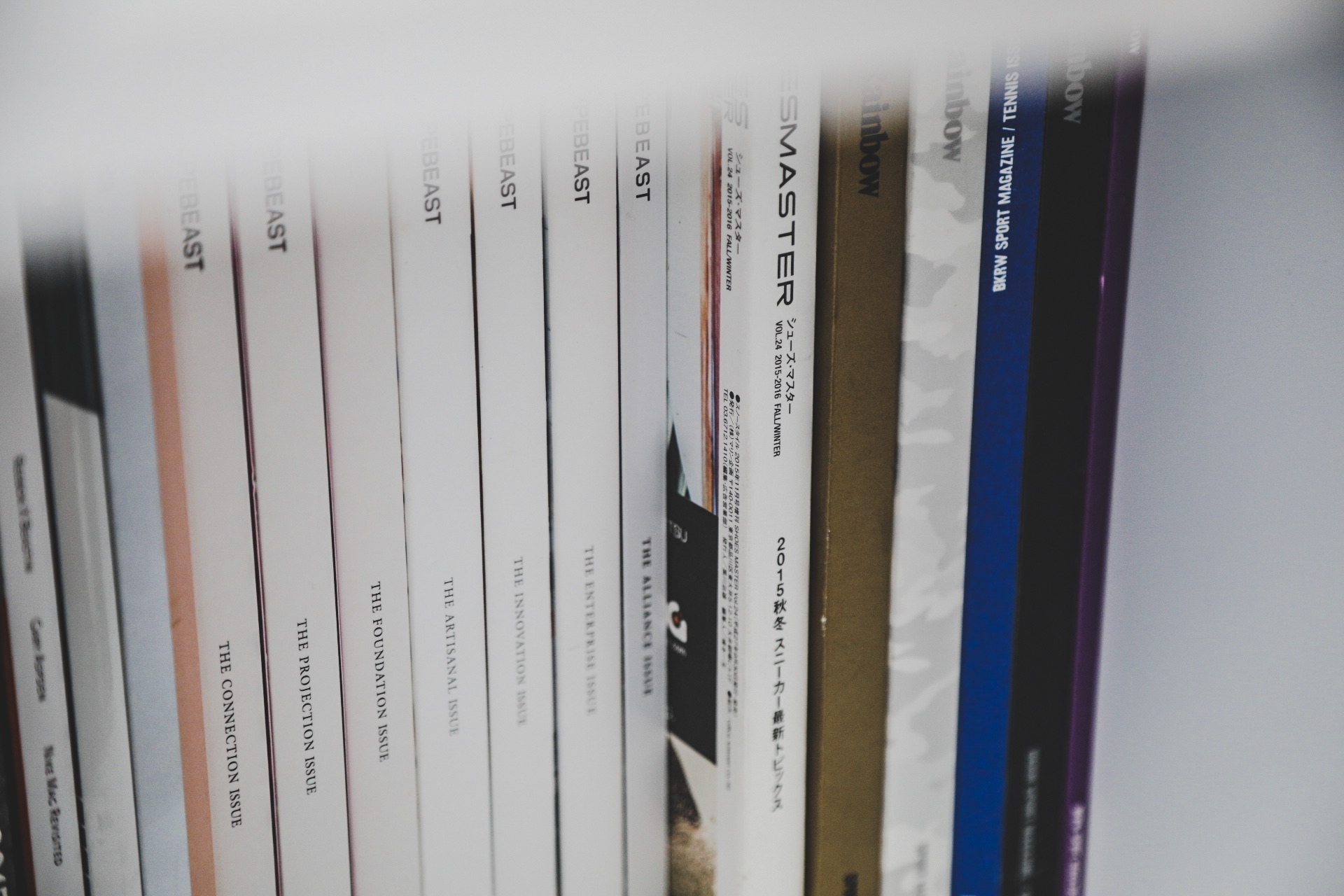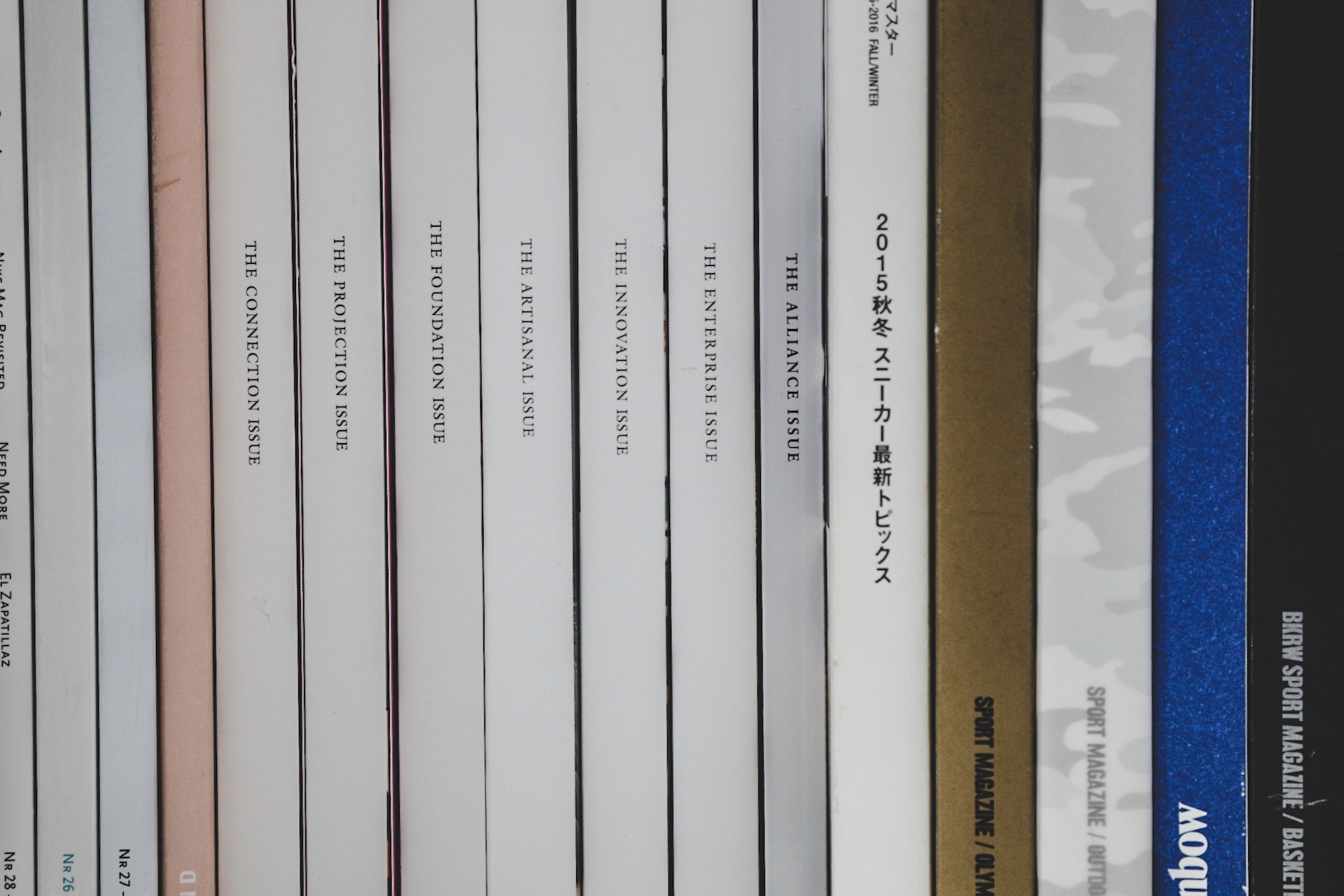Posted on 4 May By Visionarism

Rarely do we discuss the relevance of print within the sneaker culture. With the dominance of blogs and websites, is there really a need to catalogue information within the scene? In recent times, there has been the slowly growing phenomenon of sneaker print publications.

The Japanese sneaker scene have it on lock when it comes sneaker publications with contents of various magazine labels highlighting vintage models as well as up-coming releases. The challenge is the extreme difficulty in obtaining a copy given the seldom availability outside of Japan and the Far East.
In Australia, You have Sneaker Freaker, which was founded in 2002 by Simon “Woody” Wood. The content of the magazine is to provide information in regards to upcoming releases as well as provide topical discussions in shoe design and technology. Whilst the publication was created as means to acquire free sneakers from brands, the publication has grown in reputation and is arguably seen as the vanguard for printed sneaker news. Sneaker Freaker is available in reputable sneaker outlets worldwide. With Sneaker Freaker, you have other sneaker publications such as Sneakers, Sole Collector, Sneakernews and UK’s own Crepe City who periodically release their own publications in print.

We have sneaker blog sites such as Hypebeast and Highsnobiety who have broaden their focus to include lifestyle, fashion and design. They have also attempted to increase their audience by branching out to print. Their emergence in print means they now sit along side established lifestyle publications such as likes of Dazed & Confused, i-D, PAPER and The Gentleman’s Journal and Inventory – which ceased publication as of the beginning of 2016.
Finally, you have the annual compendium of the ALL GONE book. A book that highlights the previous year’s most sought after products. The book is produced by the creative agency LaMJC with Michael Dupouy at the helm. ALL GONE has sought to position itself as the definitive guide to all things highly sought after within the sneaker culture. In 2016, a celebration of the tenth anniversary book launch of ALL GONE was held at a private gallery in Soho, London. A 2-day event, in which the public were able to view products that had featured in past editions of ALL GONE. A book-signing event took place on the evening of day one whilst the evening of day 2 comprised of an evening Q+A session reflecting on the last ten years of sneaker and streetwear culture, dissecting the progression of the subculture. A lot was discussed during the evening of the Q+A, but the main theme that had piqued the attentive audience was the discussion of cataloguing sneaker information within the scene and the relevance of print.

The question of relevance regarding ALL GONE and other relevant publications had aroused interest. What was the point of doing a book on previous years release? Why produce periodic magazines where the relevant information is available online? No one in this so-called digital age in this particular niche is interested in print if we are led to believe based on that evening’s discourse. Even generally speaking, everything we consume for now has no thought for the future.
Speaking to various sources affiliated in the past has stated that the cost of purchasing magazines and books that covers the culture is pointless. Especially when they are the ones that are living it. Money spent on magazines and books is wasted, as that information is only relevant for the present. There is a perception that there is no value in historic information. Also the money could be better spent on purchasing more sneakers, toys, clothes that could appreciate in value in the future. This was the recurring response, independently confirmed in regards to the argument against print. However, this is only half the story. To look at this in a wider context, the Guardian reported of a surge in the sales of physical book prints with a rise of 5% in 2016 (from £1.51m in 2015 to £1.59m in 2016). Though 5% represents a small increase, this demonstrates that there’s still a demand for printed goods.
The deep discussions at the Q+A session also highlighted the difficulty of searching for information on items previously release on the search engines. In the passing times, information either gets updated or removed when it’s no longer relevant. This is due to the ever-changing nature of technology online and its capacity to hold relevant data. The owners of that data that we seek information from manage the data determined by its importance, value and relevance. So where does this leave us?

Though we live in the days of hyper consumerism, there is a growing demand for historical reference beyond the Internet as people begin to realise the limitations of the search engines and reference sites such as Wikipedia. Google is known to store information for so long before it becomes hard to find on its search engine. It might be worth noting here that Google tends to promote information based on relevancy, but in our subculture how is this even being indexed? Google is supposed to be the ‘ALL GONE’ for the digital age. The accuracy of information is proving important too. Whilst the Internet is a welcomed tool for researching, the exclusion of what maybe considered non-essential information could arguably distort history in any context. In this light, it’s a fundamental flaw to only rely on digital reference. Believing that the digital age was a cure of historic cataloguing was a myth.

With this realisation, it’s of no surprise that a lot of entities within this subculture have resorted to publishing books and magazine as a way of recording and cataloguing history. There is also a personal responsibility exhibited by those with a genuine interest in this culture through the acquisition of products and goods to propagate the information that we have. We personally hoard objects for gratification and refer to them in the passing of time, rather than be the active gatekeepers to the quality of information that should flow in our culture. A natural behaviour manifested from an early age. We digress.


There’s a desire amongst interested entities to make the transition from the digital realm and social media to a tangible source relatable to the everyday person. Physical publications produced periodically allows for the very transition to take place. The presentation of such publication carries a premium quality, which is not dissimilar to the fashion/lifestyle publications, mentioned earlier found at newsagents or coffee books sold in bookstores or premium outlets. The typical gloss feel with high-quality imagery and in some cases supplemented with adverts from luxury brands helps to sell the image of the culture to its desired audience. While some may balk at the price for the tomes, one should view this as one-off payment for future reference point which may not readily be available online. Also printing is not cheap, especially as some titles are produced in small quantities. Cost cannot be a motivating factor. However, there is the aspirational factor of owning a publication that is in print.

There will undoubtedly always be those who think the age of print has long gone, dying in the advent of the Internet. The relevance for print in this subculture is not initially apparent given the availing amount of blogs and websites readily available with current content. We consume for today without regard or respect for yesterday. It is only recently recognised that an accurate recording of the present is required to preserve tomorrow’s past. This must persist if the subculture wants to have a history to remember.
Written by Henry Pedro (@blcklistd) for @Visionarism